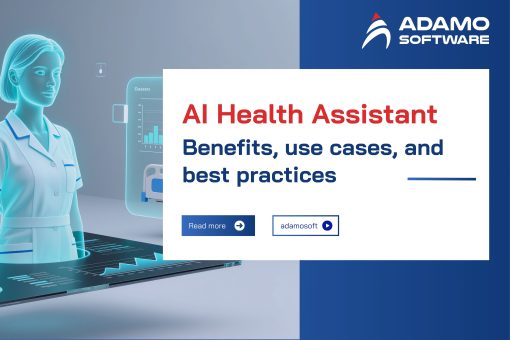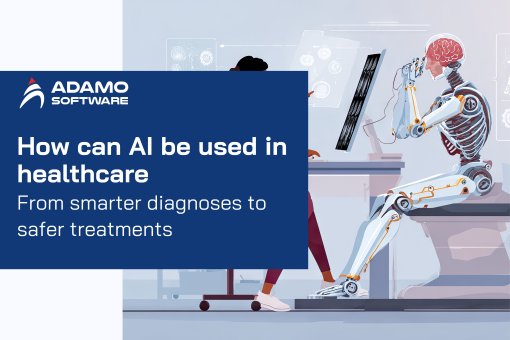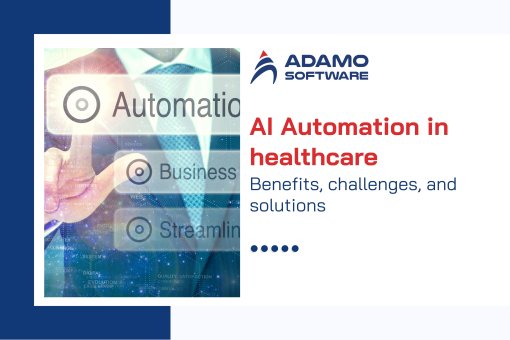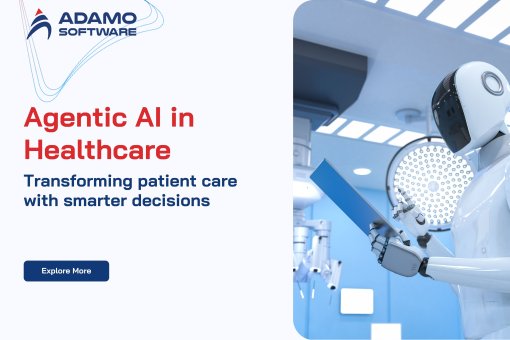Healthcare Asset Tracking: Benefits, Features, Use Cases, Cost
Because of today’s dynamic environment, lost tools and missing inventory hinder patient treatment, consume personnel’s time, and increase expenses. Think about the consequences of not having an infusion pump in an essential surgical operation or a whole ward not finding thermometers. Thankfully, the healthcare asset tracking solutions have arrived to change the way hospitals and other medical facilities deal with their assets.
This article will focus on healthcare asset tracking regarding its advantages, characteristics, and application in practice. We will also reveal the associated costs and tips that will enable organizations to select the right solution.
I. Why Asset Tracking Important for Healthcare Organizations
Healthcare asset tracking means the use of special software applications to track the position and status of tangible assets in a healthcare facility. This ranges from drugs and other tools such as syringes, bandages, to complicated hospital equipment and other essential facilities. Real-time location systems (RTLS) are one of the examples of utilizing advanced technologies to obtain beneficial information.
Healthcare assets on average are more numerous and more sensitive than assets in any other organization. This is why proper tracking is essential in healthcare facilities. Many healthcare facilities, including hospitals, ambulatory surgical centers, community health centers, and mobile clinics face the problem of tracking their inventory. With such information not being real-time, it takes time to find the items and cases of theft, loss, and deterioration affect a healthcare organization’s finances severely.
Consequently, the establishment of the healthcare asset tracking system is most advantageous for various healthcare organizations. This is especially true for those that follow the management of numerous assets. These systems will provide a solution to the problems of misplaced equipment, time wasted by the staff, and unnecessary expenses.
II. Benefits of Healthcare Asset Management Software
Benefits of healthcare asset tracking are numerous for healthcare organizations: the need to improve efficiency, decrease expenses, and increase the quality of services provided to patients. Here’s a closer look at these benefits:
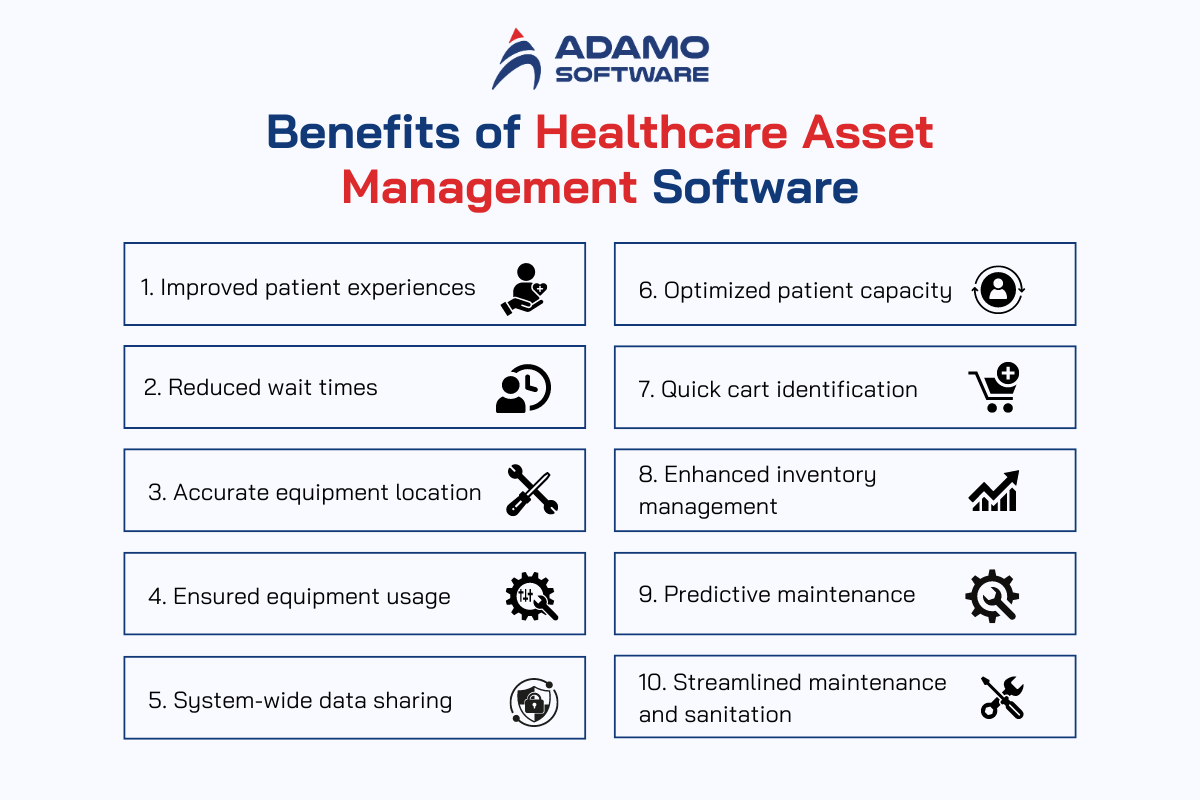
1. Improved patient experiences
High quality health care aims at positive experiences and the best results. Healthcare asset tracking directly affects both. What if patients could get the equipment, they needed with little to no wait. This equates to more contented patients and efficient working in your center. Healthcare asset tracking enables you to realize this because it simplifies the process of identifying the location of the assets. This guarantees that the right one is available when required.
It also creates a positive experience for the patient by ensuring that data entry is correct and efficient through healthcare asset tracking. Time-consuming search for information and the records that are partially or not available any longer are things of the past. This new change enables the staff to spend most of their time with the patients, hence enhancing the care of all the patients.
Thus, when you monitor the usage, location, and maintenance status of equipment, you can easily head off problems. This minimizes unnecessary complications and down time with the patient and their health in mind. Effective healthcare asset tracking always ensures that the patient’s interest remains the focal point of any healthcare facility. This approach can be understood as the win-win situation for both patients and your healthcare facility.
2. Reduced wait times
Healthcare asset tracking reduces patient’s waiting time in the hospitals. Not searching for medical carts saves a lot of time when one can exactly locate the equipment. Nurses can gather the intake information faster and patients are attended to faster. This leads to an enhanced flow in your facility and a better experience for patients.
3. Accurate equipment location
It is quite common for mobile carts to be moved around quickly in a busy hospital; hence, they are likely to be misplaced. Healthcare asset tracking addresses this squarely. With the help of such informatics, missing carts can be easily found, and patients’ care can be continued without interruption. This means your hospital won’t lose costly equipment through theft or wasting time on the tools that are gone. Thus, your hospital can save on the costs of having to replace the equipment. Healthcare asset tracking enables you to quickly find misplaced carts for better patient care.
4. Ensured equipment usage
Hospitals are the major buyers of healthcare and telehealth carts and, therefore, spend a lot of money on health care. As can be inferred, the proper usage of these resources is something that administrators strive to achieve. Healthcare asset tracking allows the staff to have access to real-time information on cart usage: when used, where used, and even how. This valuable data leads to good decisions that will increase the use of the cart, and therefore, the return on investment for the healthcare facility.
5. System-wide data sharing
Assets tracking in healthcare provides useful information to hospitals. Healthcare facilities can monitor the carts and use RTLS to create and report on databases throughout the healthcare system. This data enables the staff to make decisions that would improve the quality of patient care as well as the efficiency of the processes in place.
The advantages do not end on the individuality of the hospital. Through healthcare asset tracking, even whole hospital systems can then compare this data and find out what among them is doing the best. This fosters organizational effectiveness, which advances the well-being of the patients besides lowering operation expenses. Through this approach to tracking health care assets, health care systems can offer quality services while lowering their expenses.
6. Optimized patient capacity
Hospitals depend on the availability of adequate space and equipment to extend the best services to patients. Healthcare tracking of assets gives crucial information that enables the staff to decide on the patient throughput daily. If the staff tracks the usage of the carts, they can organize their appointments. This will let them know whether they possess the necessary equipment to treat the patients.
Healthcare asset tracking is not just about location. Information on carts’ location, together with location software and capacity management, enables hospitals to forecast patient waiting time and schedule. This in turn means that patients’ flow through the facility, the delivery of treatment, and the general experience is enhanced.
7. Quick cart identification
Mobile workstations are advantageous to hospitals in terms of flexibility as well as cost. Though, it seems to be difficult to monitor these roaming carts to ensure they are in the right place at the right time. Healthcare asset tracking deals with this by offering location identification at the time of tracking. They do not have to spend a considerable amount of time searching for the misplaced workstations — so that equipment is easily found and remains properly stored when not in use.
The tracking of assets in healthcare is not only limited to tracing the location of the carts. Information on the quantity of carts helps with timely provision of equipment. This way, hospitals will be able to avoid making a wrong decision due to inaccurate information on the carts available. This means that more hospital operations can be done with the available resources hence saving a lot of time.
8. Enhanced inventory management
Real-time data updates give people throughout the entire healthcare system access to the most accurate information. It also enables the decision-makers to recognize the superior approaches in managing inventories and make them known to other facilities for enhancing the system.
Also, healthcare asset tracking reduces human error. RTLS systems help in the management of the entire inventory of the hospital such as the location, condition and requirement for replacement of equipment. This helps the administrator know what to do with the cart inventory, thereby directing resources to the right area and improving the flow of operations.
9. Predictive maintenance
Healthcare asset tracking enables hospitals to adopt the use of preventive measures in their healthcare facilities. These systems can detect problems that may arise before equipment failure by analyzing cart performance. It is a preventive mechanism that enables the staff to fix equipment early and avoid inconveniences that may affect the delivery of quality patient care by the nurses and providers. Asset tracking in the healthcare industry means there will be saving money for the hospitals and improving efficiency in delivering quality patient care.
10. Streamlined maintenance and sanitation
This is the case with modern mobile carts which, though portable, need to be sterilized often to avoid the spread of infection. Healthcare asset tracking addresses this issue through providing the staff with means to track the cart location. Therefore, it guarantees that they are disinfected and available for usage.
However, it is not just a matter of cleanliness, although it plays a significant role. Healthcare asset tracking enables the generation of real-time updates of the maintenance schedule. Alarms remind staff of upcoming repairs while a view on the history of maintenance allows staff to engage in preventive measures on the equipment. This means less equipment breakdowns that could compromise your staff’s ability to deliver quality care and maintain patient safety.
III. Key Features of Healthcare Asset Tracking
Evaluating and managing a huge stock of medical equipment is one of the key elements in providing quality patient care in a hospital. Here’s how healthcare asset tracking key features can help streamline this process:
_ Real-time location tracking: Having an accurate identification of the location of equipment including wheelchairs, IV pumps, and the like is important to quickly locate them during procedures. This is done using Real-Time Location Systems (RTLS) that incorporate such technologies as Bluetooth Low Energy (BLE) tags. BLE is highly sought after since it is affordable, has long battery life and can be scaled up.
_ Improved asset management: It is easy for the conventional approaches to fail in monitoring the usage of equipment by the different departments. Asset tracking identifies the location of every item that has been tagged and helps in the tracking of usage and sharing of the resources. This data is useful in the planning of the distribution of equipment, thus reducing costs for the hospitals.
_ Centralized medical asset data: Some key benefits of using this system include storage of data concerning each asset in terms of maintenance history and calibration certificates and keeping the equipment in working condition. This helps by cutting down on time when equipment would have been out of order and thus not being available for use when patients need it.
There are also several other functions that can be incorporated for enhanced performance and cost savings:
![]()
1. Inventory quality control and maintenance
A real-time location system (RTLS) provides major benefits in the management of assets particularly in the healthcare industry. PAR level and stocks’ automatic replenishment make it efficient in inventory control. This eliminates cases of stock out, overstocking, and missing or damaged equipment.
RTLS ensures that equipment is used according to the recommended procedures and reminds clients about the need to service equipment. Employees can access the history of cleaning and maintenance of all the items that have been tracked. They can schedule the best time for maintenance to enable assets to have the best lifespan. Also, they can inform about the equipment problems and plan maintenance and repairs through the same system.
2. Analytics and reporting
RTLS helps in locating healthcare equipment through placing wireless tags on them and getting regular updates on the equipment’s location and usage. This data helps determine which equipment is not being used and where spending on purchases could be more effective. Users can also add more data through mobile applications or terminals; therefore, comprehensive reports and use diagrams can be made. Statistics of technical and mechanical problems with equipment help prevent such issues and keep it in proper working condition for patients’ benefit.
3. Integration with current systems
One of the most important success factors when implementing healthcare asset tracking is integration with the current hospital information system (HIS). This makes it possible to maintain a single approach to a project and not interfere with the prevailing processes.
4. Security and Compliance
The security features are given utmost importance in the hospitals to protect the patient data at each point of the care continuum. Your healthcare asset tracking system should also focus on data privacy and the HIPAA requirements.
IV. How Asset Tracking for Healthcare Work
Real-time location of the equipment and supplies is made possible through technologies such as RFID tags in healthcare asset tracking systems. These tags can be secured on anything ranging from simple personal protective gears to advanced health care equipment.
The system securely sends the position information to a cloud server where further analysis by analytical tools takes place. This assists the hospitals in understanding equipment usage, how efficient they are, which items are rarely used and when they are likely to break down. A feature that staff can use is searching for equipment and requesting specific items within a period. More specifically, administrators can perform all the actions related to the system management, ranging from adding assets, monitoring the data, and controlling the access.
As for the real-time tracking, RFID can be used, while QR codes and GPS can also be implemented in certain scenarios. QR codes are cheaper for use in items checked out frequently like equipment. Whereas GPS is useful in tracking assets used in outreach programs.
You can explore more about Hospital Management Systems: Types, Key Features & Must-Know Insights here.
V. Cost to Implement Healthcare Asset Tracking Software
The time for developing a custom healthcare asset tracking solution can range from 3-6 months, depending on two main factors:
| Project Scope and Functionality: | Development Approach: |
| Additional advanced features such as the asset utilization analytics will make the system more complicated. Therefore, the software costs might be increased.
|
It will take time to develop a system from the ground up on custom code than to use pre-existing components such as AWS IoT services. It also has implications on cost, in terms of which, the production of the preferred color is affected.
|
_ Here’s a breakdown of the core cost factors involved in healthcare asset tracking:
1. Software functionality: As mentioned above, the features and complexity of your asset tracking system directly affect the software development cost.
2. Development approach – two main options:
_ Custom development: This gives the maximum flexibility, but it is time-consuming and resource intensive thus making the total cost high.
_ Pre-built components: Pre-packed solutions such as the AWS IoT services can be easier to implement and cheaper compared to building from scratch. But the flexibility of the solution may be restricted.
3. Equipment costs:
_ RFID tags: The type of tags (active or passive) you choose will impact cost. Active tags usually provide better coverage area but at the same time cost more.
_ RFID readers: The need for the numbers and types of readers varies depending on the structure and design of your facility.
_ Initial installation: The expenses incurred in putting these RFID tags and readers all over the hospital.
4. Operational costs – Cloud services: If the software you have chosen is integrated with the cloud services for the storage of data or for analytics, then there will be monthly charges for this.
VI. How to Choose the Best Healthcare Asset Tracking Solution with Adamo
Implementation of the right healthcare asset tracking system is sensitive and requires proper strategizing. First, assess your needs. You must track the value and the type of assets. For example, high-value assets can be tracked using RFID or RTLS. Barcodes are used for low value like pharmacies assets. The location of the assets also defines the type of technology to be used. For instance, RTLS can be used for indoors assets and GPS for mobile assets.
Budget is also key. RTLS provides real time information and high accuracy, however, it is more costly than RFID or barcode technology. However, do not forget that when assets are lost or damaged, the amounts lost are higher in the long run.
Finally, consider staff training. Preferred systems with training possibilities like this will help avoid difficulties in the system implementation process and receive the most benefits from the systems. If your staff is already acquainted with similar technology, internal training here may not be very necessary.

If you’re still struggling to choose your healthcare asset tracking system, let Adamo Software help you with that! We offer a wide range of technological solutions with an existing record of successful projects in the healthcare industry. Explore our solutions on Remote Patient Monitoring, Wearable Devices, and Telemedicine with us here. Our team will surely be able to help you develop the most suitable system to track your healthcare assets in no time. Contact us today to discuss more about most advanced digital health solutions.







